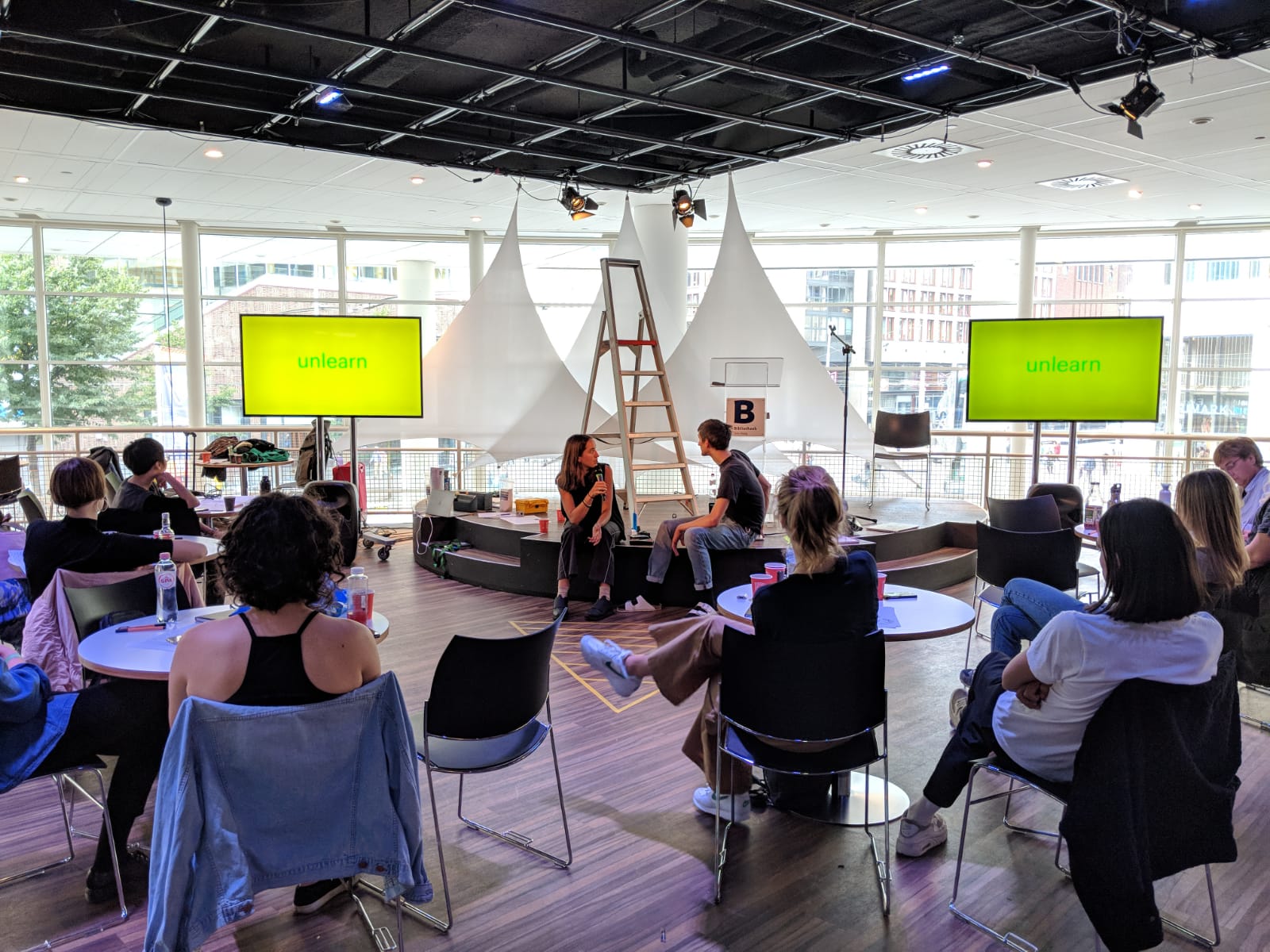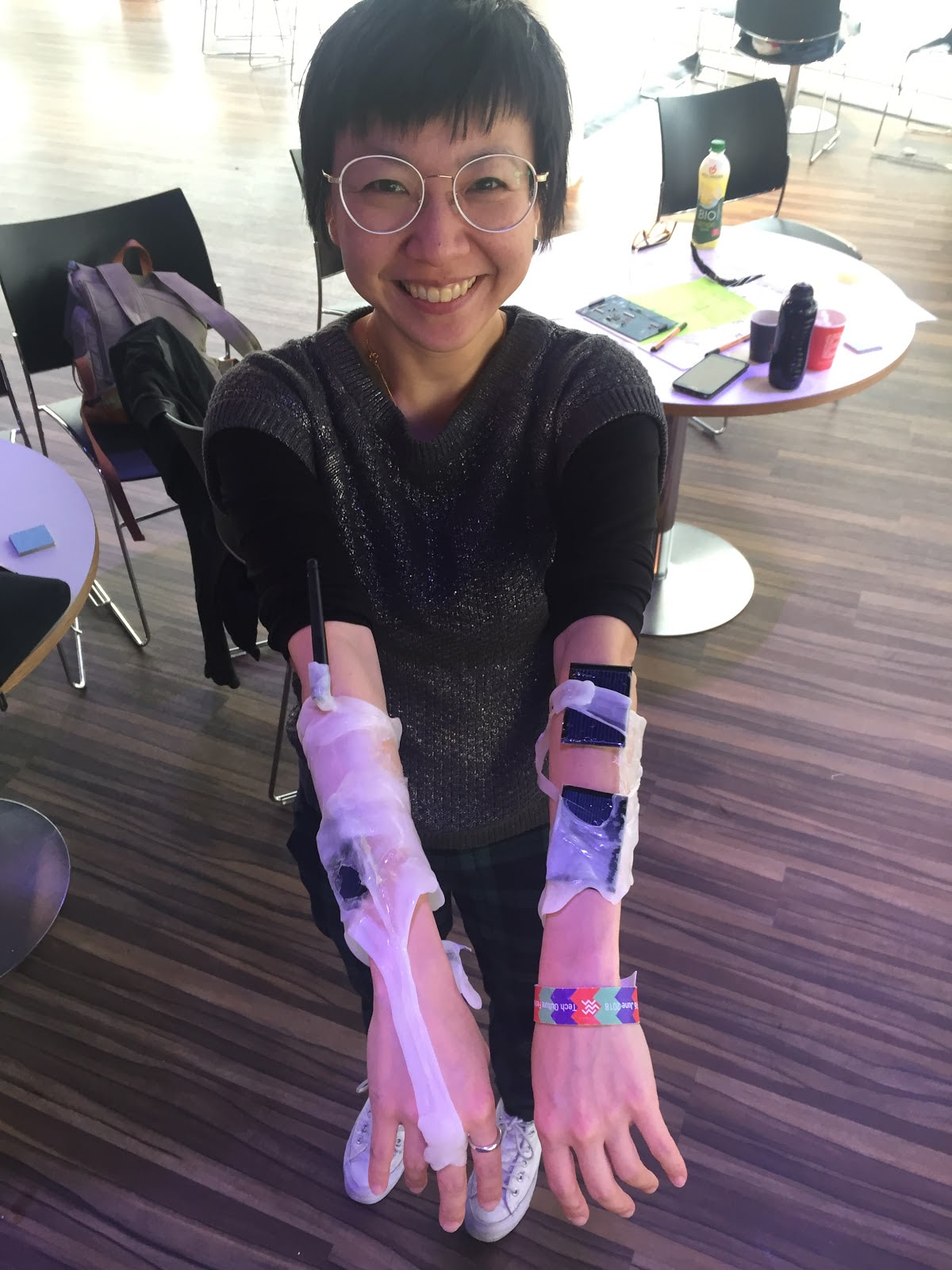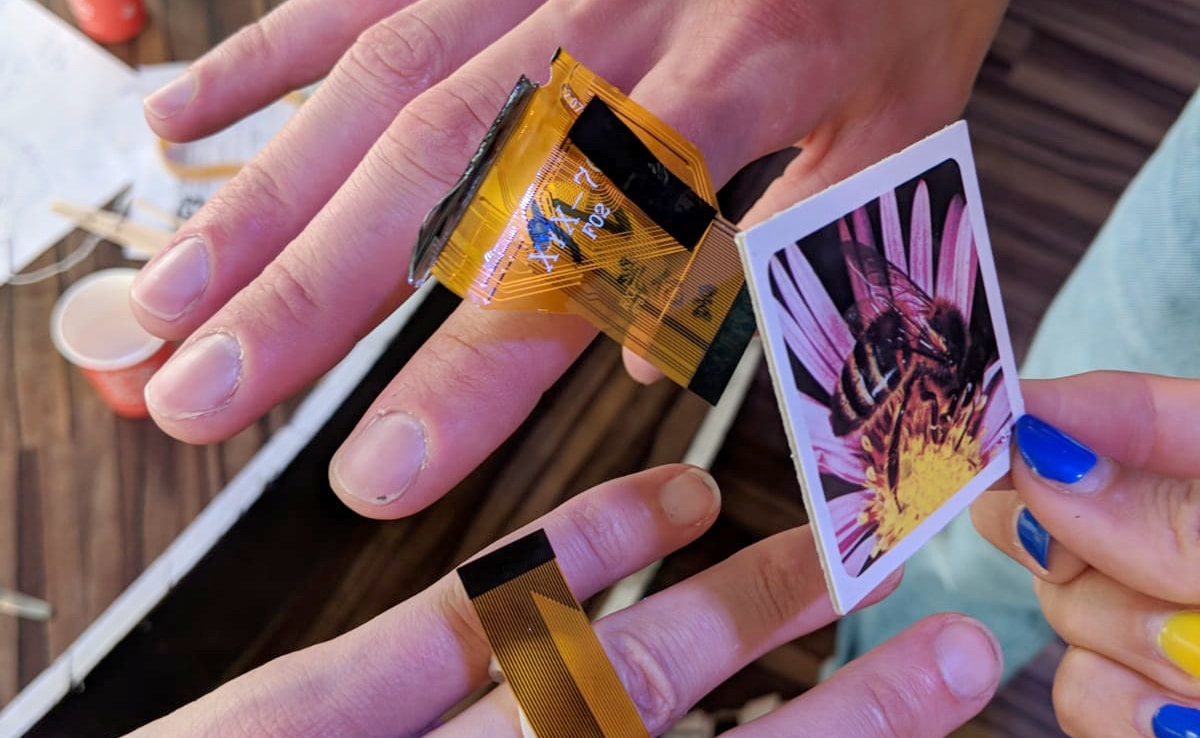Color-blind artist Neil Harbisson designed a brain-implanted antenna that converts colors into sound. This enables him to hear colors he cannot see, and extends his vision to ultraviolets and infrareds. As technology is rapidly advancing, and the boundaries between the body and technology are blurred and ambiguous, it seems plausible that humans will use technologies not only to enhance, but also to extend their physical capabilities.
Of course, glasses and hearing-aids are technologies that are already commonly used to make up for sensory impairments. But what would happen if we take this a step further and, like Neil Harbisson, envision new technologies that cooperate with our body to create new senses that go beyond our current physical capabilities? If you could have another sense, which sense would you choose?
 Meet Hackers & Designers Juliette and Andre.
Meet Hackers & Designers Juliette and Andre.
Next Nature Lab: Next Senses
These questions were recently explored during the workshop 'Prototyping Next Senses'; a joint effort with NNN fellow Leanne Wijnsma and Amsterdam-based designer collective Hackers & Designers to challenge, reconceptualize and design human perception.
Inspired by the specific qualities of animals and how they perceive the world, participants discussed the senses that they would like to possess. Frogs are for example able to absorb oxygen through their skin, elephants are sensitive to earthly vibrations and use them to communicate, bees are able to process ultraviolet light and sharks have the ability to sense electricity. Encouraged by the hands-on mentality of Hackers & Designers, the participants then started to deconstruct existing technological objects and use the materials to prototype new senses.
 Participant Stef envisioned Froxygen; this would enable humans to breathe and filter oxygen through their skin and spare the lungs of polluted air.
Participant Stef envisioned Froxygen; this would enable humans to breathe and filter oxygen through their skin and spare the lungs of polluted air.
Speculative futures, tangible prototypes
One of the prototypes created during the day was a wearable lightsource that sheds light on human emotions, and displays them to people who have trouble reading emotions and facial expressions of others, such as people on the autistic spectrum. This prototype started an interesting discussion regarding the relation between facial expressions and actual emotions. Are all emotions necessarily visible on the face? People who have trouble expressing their emotions could use the help of sensors connected to their heart rate and temperature, which became a new prototype. Based on the physical indicators of mood, a colored light could express feelings and even extend the experience of emotions beyond the existing human facial expressions.
The skin of the frog inspired another group to prototype a similar skin for humans (pictured above). The Froxygen would enable humans to breathe and filter oxygen through their skin and spare the lungs of polluted air. This could be designed as a cyborg-like fashion statement, or invisibly integrated into the clothes that already are an accepted technology.
Another group was inspired by pigs, who use their nose to dig through soil and sense the presence of plant-based food (pictured below). Wouldn’t it be great to sense the presence and exact contents of food without having to check the endless lists of ingredients? Using the simple yet vital technology of a fork, they prototyped a shapeshifting ‘sensible’ fork. The fork softens and becomes useless when it senses animal-based products, while it becomes functional when it senses plant-based food.
 At the end of the day all participants gathered around the physical model of The Pyramid of Technology.
At the end of the day all participants gathered around the physical model of The Pyramid of Technology.
The Pyramid of Technology
Alongside Next Nature’s Pyramid of Technology, we started discussing if and how the envisioned senses could be made operational, applied and accepted. For instance, why did the Google Glass that extended our vision never make it to the accepted phase? Would people actually wear a frog-like skin, or use a sensible fork at dinner? Probably - and unfortunately - most of these prototypes will probably remain in the envisioned stage for now, but they certainly are great conversation-starters already.
The Next Nature workshop offered a platform for the exploratory thinking exhibited above. The aim for some participants was to imagine more speculative, or futuristic designs: “I want to master future-thinking”. Many wondered how to ensure this more forward thinking. How to alleviate the boundaries of our current ideas of technologies, which may limit envisioning process to the ‘knowns’ and target groups of today. One participant mentioned: “It is difficult to think creatively about technology, you quickly fall back on the technologies you already know”
The Pyramid of Technology is the next nature tool to facilitate this process. Would you like to attend, or host such a workshop? Well, we recently started the NNN Academy! Through interactive workshops, we explore what it means to build, design, and live in the next nature. Facilitated by our Pyramid of Technology Toolkit, and led by a trained NNN guide, the workshops offer a new way to discuss technology, facilitate brainstorms and catalyze innovative processes. Want to know more? Then visit this page!

Share your thoughts and join the technology debate!
Be the first to comment